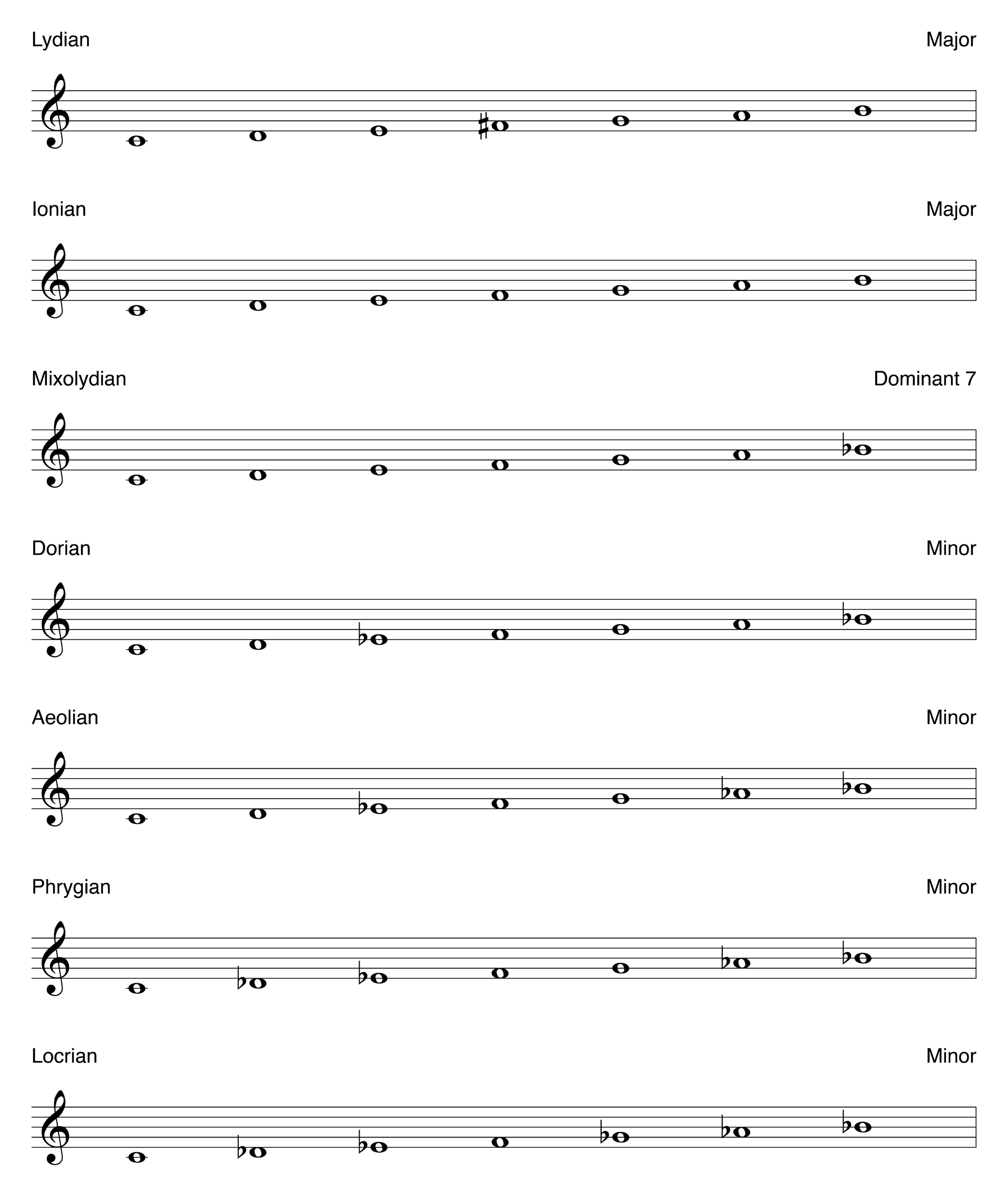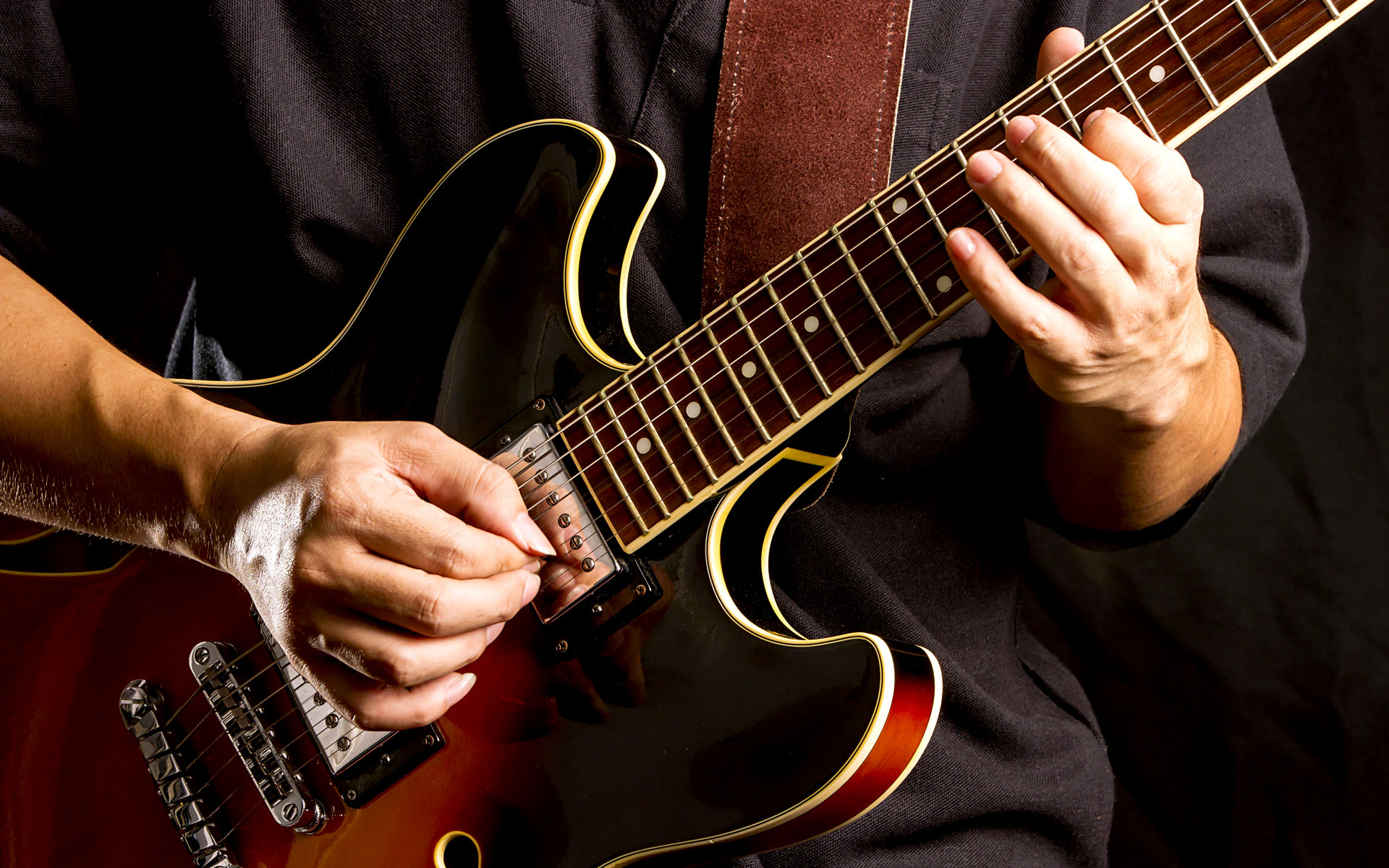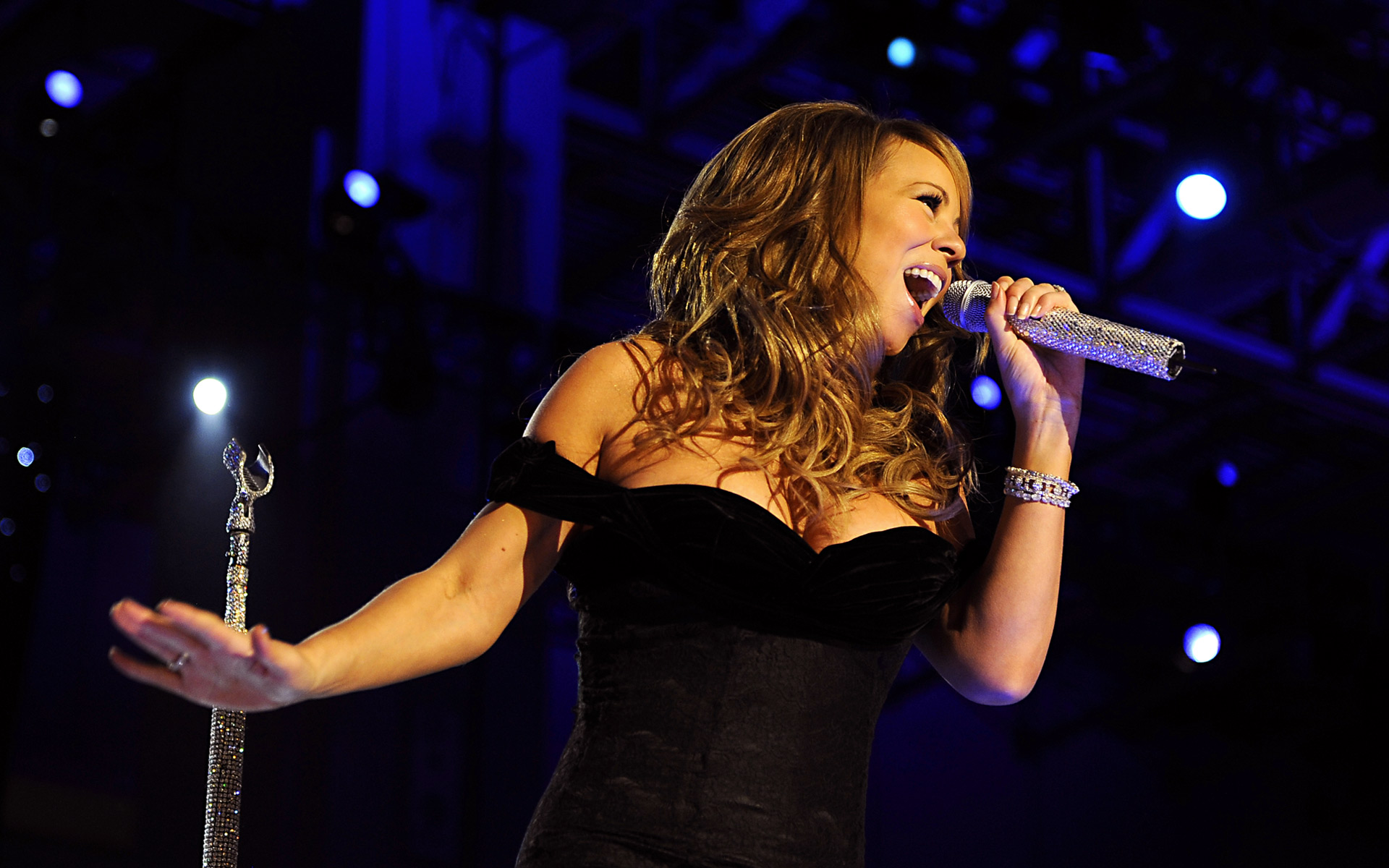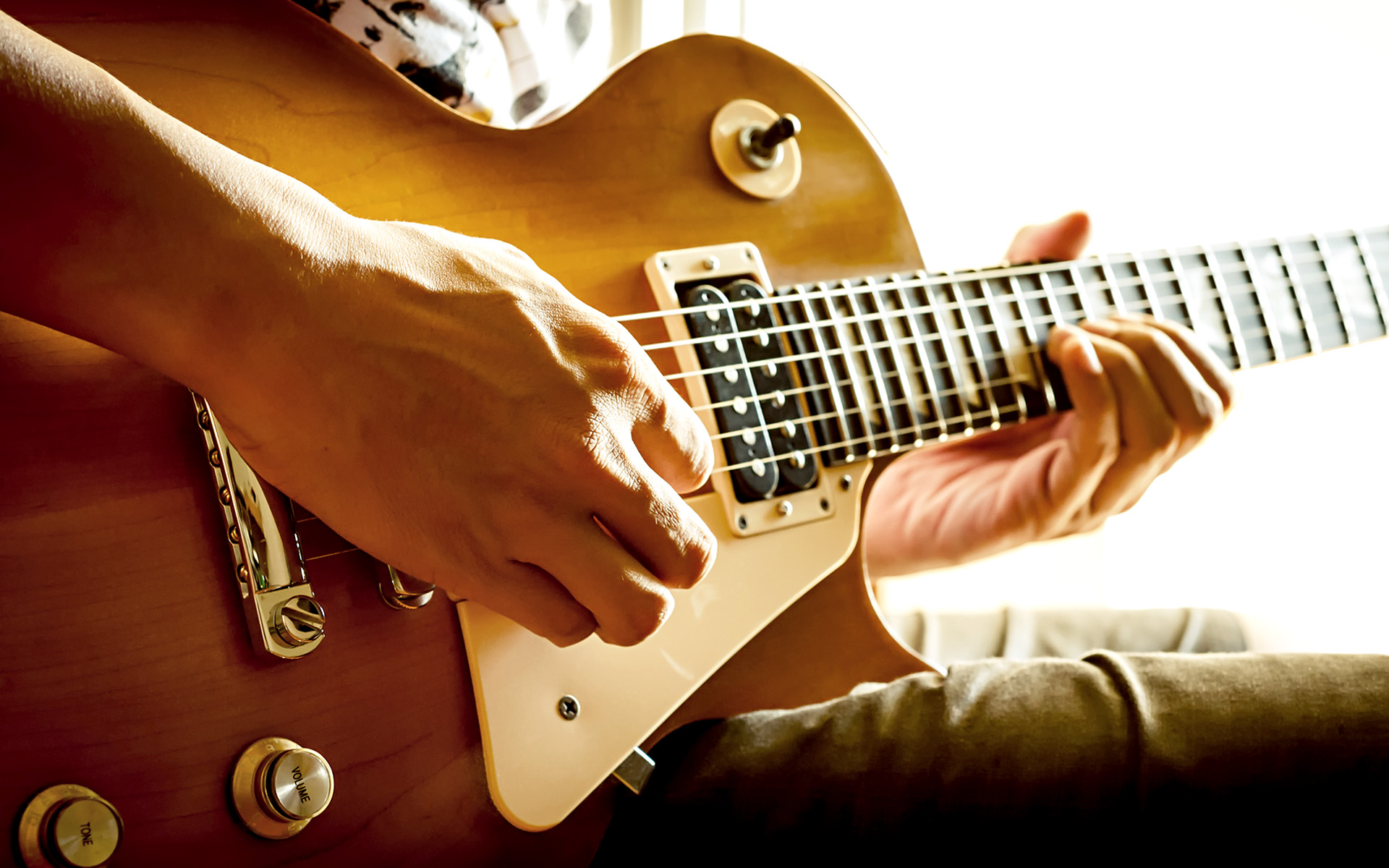The following information on jazz scales is excerpted from the Berklee Online course Gary Burton: Jazz Improvisation, written by Gary Burton, and currently enrolling.
In spoken language, we learn from experience, talking and listening to others. We also learn from studying and analyzing language in school. Over time, one becomes fluent in a language and no longer has to consciously think about the mechanics while speaking. The same process of assimilation takes place when learning jazz improvisation.
To become fluent in the language of jazz improvisation, you should become familiar with the most commonly used scales. As it turns out, there are 10 scales that cover 95 percent of all playing situations. The goal is to be able to
identify, memorize, and practice these 10 scales in all 12 keys so you can recall them immediately. Once you become intimately familiar with these scales, you become fluent in jazz improvisation.
Listen to Gary Burton on the Music is My Life Podcast
Chord Scales
Chord scales make up the jazz improvisation vocabulary. These 10 scales are used in nearly all the harmonies you will encounter in typical show tunes, jazz compositions, pop songs, and more. They include: the seven modes, the Lydian ♭7, the altered scale, and the symmetrical diminished scale.
The Seven Modes Derived from the Diatonic Scale
We start by considering the modes: seven scales derived from the diatonic
scale. You may have already learned about the modes if you have studied
traditional harmony. Simply put, if you start with the diatonic scale, say the C scale, that’s the Ionian mode. Using the same notes starting on the second tone (D), it’s the Dorian. Starting on the third note (E) it’s the Phrygian mode. Starting on the fourth note (F) gives us the Lydian, and the fifth note (G) results in the Mixolydian. Beginning the scale with the sixth note (A) is the Aeolian mode, and finally with the seventh note (B), we get the Locrian.
- Ionian: Starts on the first note – C
- Dorian: Starts on the second note – D
- Phrygian: Starts on the third note – E
- Lydian: Starts on the fourth note – F
- Mixolydian: Starts on the fifth note – G
- Aeolian: Starts on the sixth note – A
- Locrian: Starts on the seventh note – B
Bright or Dark?
It is more logical to think of the modes in order from bright to dark. Notice which modes are major or minor and the one mode that is dominant 7th in nature. In jazz improvisation, it’s important to know the sound of the scale when you hear it or see it, and the type of harmonic coloration suggested by the mode.
Check out Gary Burton and Chick Corea’s Tiny Desk Concert from NPR.
The Seven Modes in Order from Brightest to Darkest

Three Dominant Alternatives
In addition to the seven modes, there are three scales that are very common in popular songs and jazz. We need to add these three to arrive at the complete list of 10 scales. All three of these additional scales are employed on dominant 7 harmonies.
The Lydian ♭7
The Lydian ♭7 scale is the Lydian scale with the seventh degree lowered by a half step.

The Altered Scale
The altered scale makes use of all the possible altered notes. In addition to the 1, 3, and ♭7, which make up the basic chord sound, adding the ♭9, ♯9, ♯11, and ♭13, gives us the complete scale.

The Symmetrical Diminished Scale
The symmetrical diminished scale is closely related to the altered scale. The first five notes of the scale are, in fact, the same. But instead of the ♭13 used in the altered scale, the symmetrical diminished scale uses the 5th and 6th. Of course, this scale strongly suggests the sound of the diminished chord.

NOTE: The symmetrical diminished scale is also used when the diminished chord symbol occurs. In that case, instead of using the pattern half-step, whole-step, half-step, whole-step, etc., as used on a dominant 7 harmony, the pattern for a diminished chord symbol is the opposite: whole-step, half-step, whole-step, half-step, etc.
Memorizing Jazz Scales
We need to have an instant recall to draw upon for each of the 10 commonplace scales—in all 12 keys. That makes a total of 120 scales. Becoming intimately familiar with that many scales is not as daunting a task as it may seem since a number of the scales share the same note groupings, just in a different order.
You need to memorize them and be able to recall them instantly without having to consciously think about the individual notes that make up the scales. At the sight of a chord symbol, the player needs to have an instant response:
- A visual image of the shape and pattern of the scale
- An aural memory of the sound of that particular scale
With the combination of visual and auditory memory, the player should
be able to start playing on the scale immediately without having to actively
think about the mechanics involved.
LEARN IMPROVISATION WITH BERKLEE ONLINE
Practicing Jazz Scales
The goal is to imprint the shape and sound of the scales in our memory, and
also to have a variety of ways to group the notes of the scale, which will come in handy when we want to make melodies. We’re never going to be improvising by simply going up and down the scales. We also have to learn how to comfortably start playing on a scale without having to start with the root note every time.
The traditional approach to practicing scales is to follow these steps:
- Start on the root note (or tonic)
- Go up and down the scale
However, it’s much more effective to practice the 10 scales:
- In random patterns
- Using a variety of intervals
- With the full range of your instrument
- Leaping around the range frequently
- Varying the rhythms
Practice Tip:
When learning new chord scales for a tune, do not allow yourself to cheat.
You’re going to want to know the scales for all the chords of a song and not have to resort to guessing or waiting to hear what someone else plays on a harmony so you can try to pick up usable notes by ear. Learning the vocabulary now will allow you to better express yourself later.
Apply What You’ve Learned
So far we’ve learned that in jazz improvisation you must be able to quickly recall chord scales to play them fluently. This becomes important when choosing which one to use on a harmony. When looking at a new tune at a session, there’s no time to take the music home to work out scales. Essentially, there’s one, sometimes two, questions to answer to determine the correct chord scale.
Question: What scale should you use if the chord symbol is for a major chord, say Cmaj7? Look at the 10 common chord scales and you’ll see that there are two common scales for major type chords: Ionian and Lydian.
The difference between these two versions of the chord scale is just one note, the 4th degree of the scale. In the Ionian it’s a natural 4, in the Lydian it’s a raised 4 (also called the ♯11). So as we approach the Cmaj7 chord we are searching for either an F♮ or an F♯ to tell us which of the two possible
chord scales we should use.
Answer: There are two places where you can look for the answer to this question.
- First look at the written notes taking place during the harmony. As your eyes scan the notes and you look for an F or an F♯, you will see very quickly if either note is there. About half the time, the note in question, the one about which you need to decide, will be included
among the written melody notes. - If you don’t see it when you look at the written melody, then you can find it in the preceding chord scale. That is, the scale just before the Cmaj7. Let’s say the preceding chord is a G7. Think of the G7 chord and you will quickly notice that it has an F♮ in it. The principle at work here is that the notes in a chord and its corresponding chord scale will want to continue ringing into the next harmony, unless something in the next harmony forces it to change. So in the case of G7 to Cmaj7, the F♮ in the G7 harmony wants to carry over into the C harmony, indicating that the Ionian scale is the one that will work best on the Cmaj7 chord.

In reality, all the players in an ensemble are following a similar process; making decisions about what is the most appropriate chord scale for each
harmony. And, like our examples, they are looking for the notes in question to decide which scales are the best choices.
Most of the time, the choice is fairly obvious and can be determined in an
instant. Occasionally, there will be a situation that is less clear cut, and you
may find that your first guess doesn’t match what the other players chose the first time through the changes. If that happens, you’ll know to adjust the next time through. Also, sometimes you’ll find a chord where maybe two different scales both seem to work. In that case, you can either choose which one you like or check to see what scale the other musicians are using for the harmony.
The purpose here is not to necessarily get all of the jazz scales correct the first time through. The intention is to have a system you can use that will be correct most of the time, and allow you to keep up with the flow of the music in real time.
TAKE A COURSE WITH GARY BURTON












